How do I use Veeam v10 NAS backup with Wasabi?
Wasabi is a member of Veeam's cloud partner ecosystem. We have worked with Veeam closely to offer both a seamless implementation and a smooth transition to cloud storage. For more information on how Veeam works with Wasabi, refer to Veeam with Wasabi Solution Overview.
If you are going to leverage immutable Veeam backups, follow the steps in Object Lock: Enabling.
Enabling bucket versioning only is not a proper configuration for immutable Veeam backups and can cause problems. If you are simply going to use regular Veeam backups with Wasabi buckets, bucket versioning is not required.
The data restoration process is handled by your specific backup software application. As there are many, potential variables that will affect your unique environment, Wasabi strongly recommends that you seek the guidance of your backup software's technical support team in the event that you encounter difficulty or have application-specific inquiries.
Native S3 Interface: The Veeam v10 release has continued its native support of the S3 interface for Veeam's Backup & Replication product. This native S3 interface enables Veeam customers to use S3-compatible storage (such as Wasabi) as a Cloud Tier. Veeam customers should contact their Veeam account team for details.
The steps outlined below require the Veeam v10 release. For other release versions, refer to Veeam With Wasabi.
The Veeam application requires base licensing of Enterprise or Enterprise Plus to leverage the Scale-Out Backup Repository (SOBR) feature. The SOBR is required for Wasabi Integration. Contact your Veeam sales representative to learn more about Veeam licensing. For information about Veeam Licensing, review Veeam Product Features Comparison page.
Navigate to Inventory. Click File Shares.
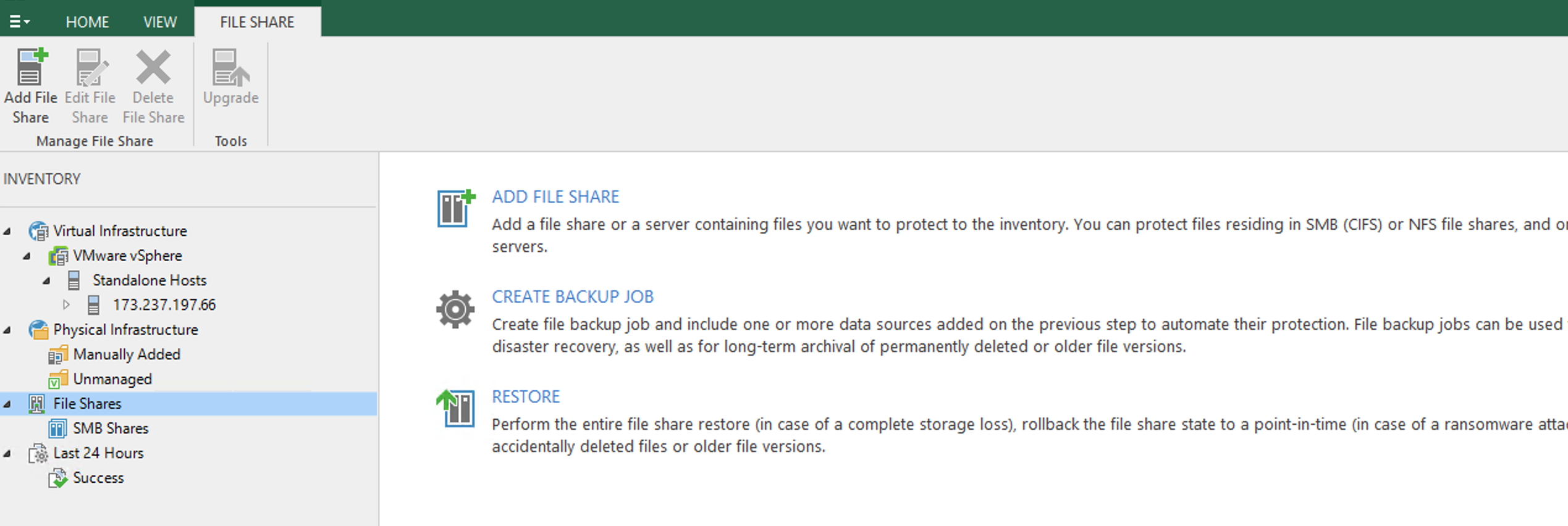
Click Add File Shares. Click NFS share.
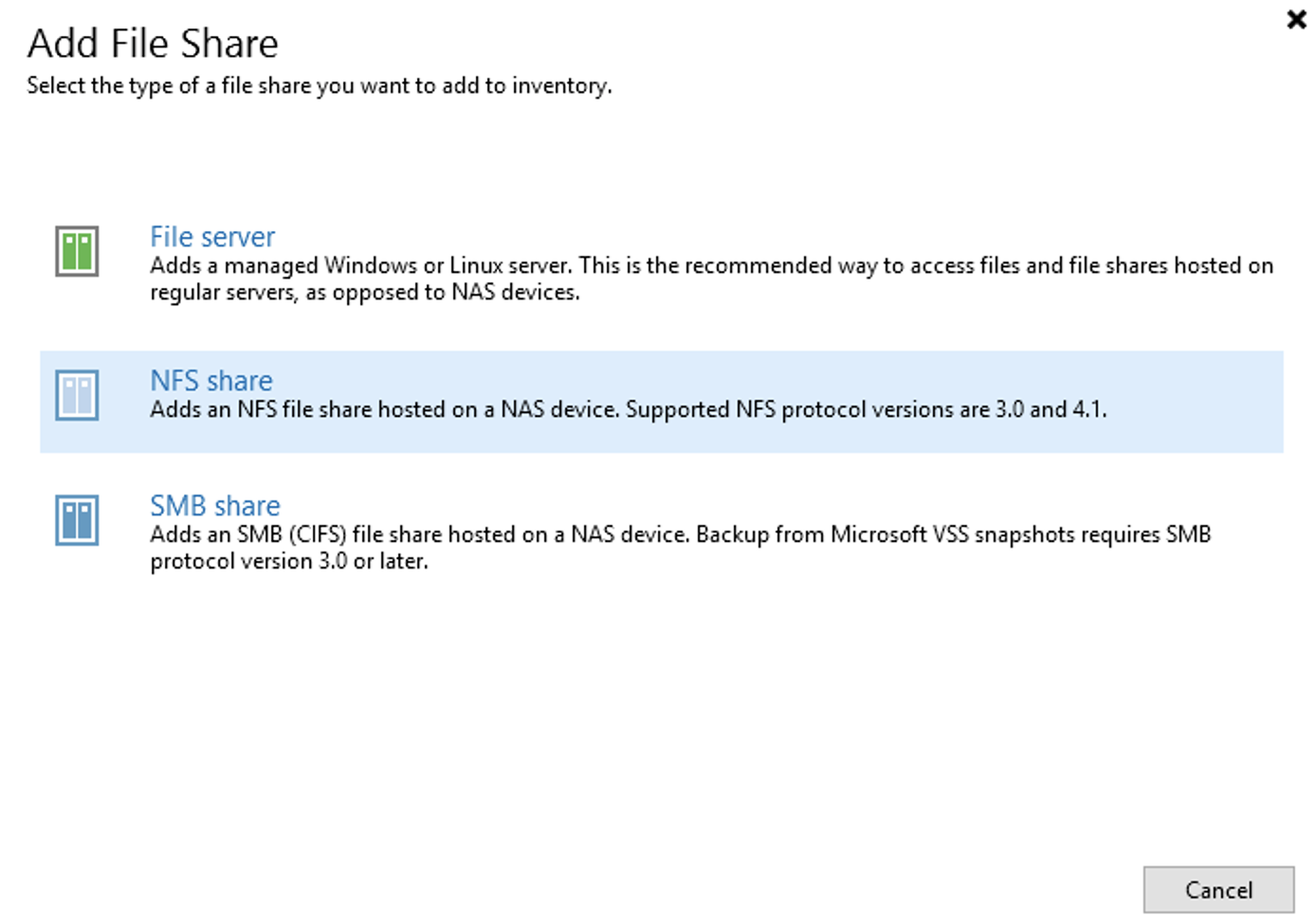
Click either SMB or NFS share. Provide the NFS path and click Next.
The following example walks through backing up an NFS share. Contact Veeam if you have questions about your specific configuration.
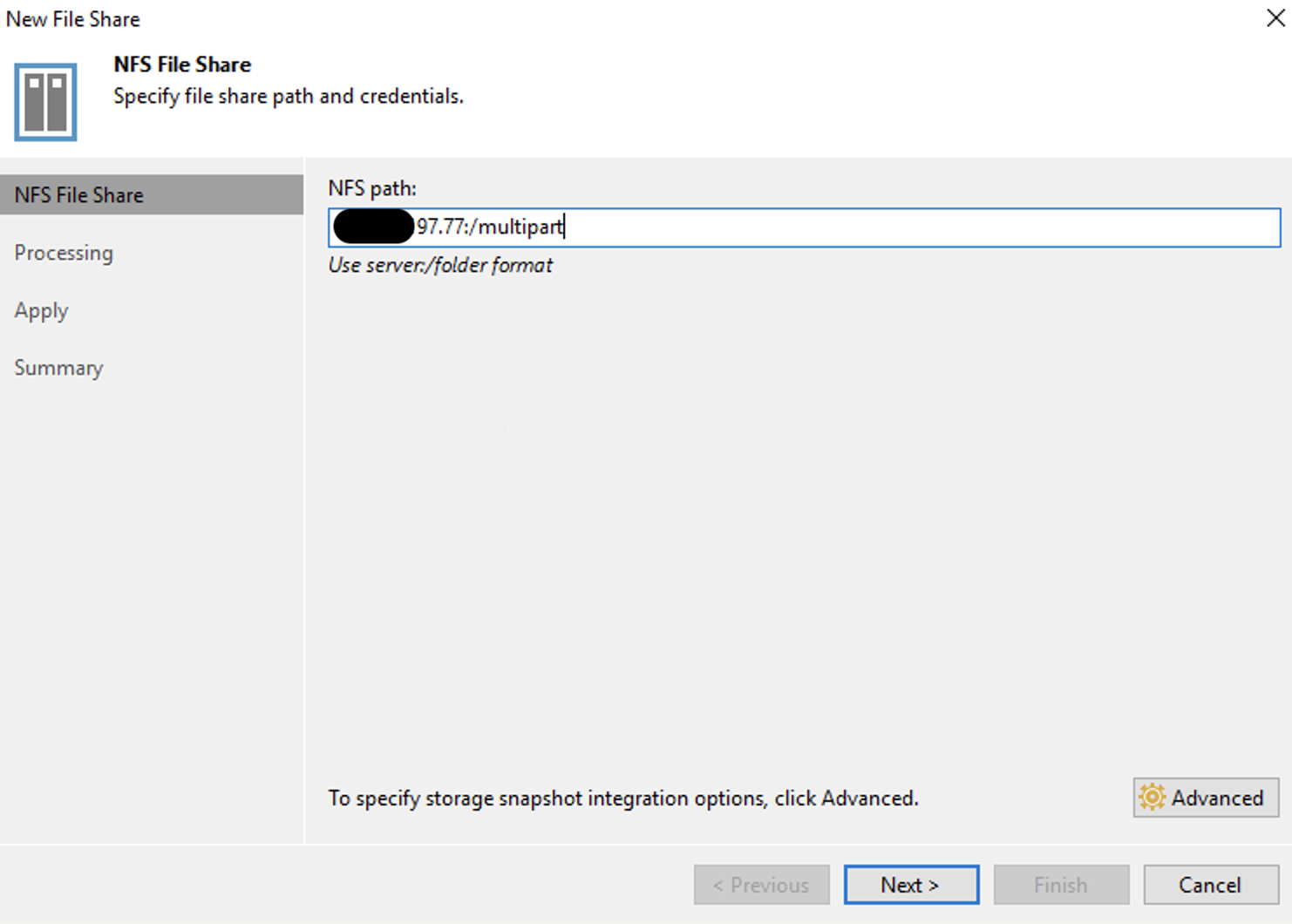
Select your local backup repository from the drop-down. Click Apply.
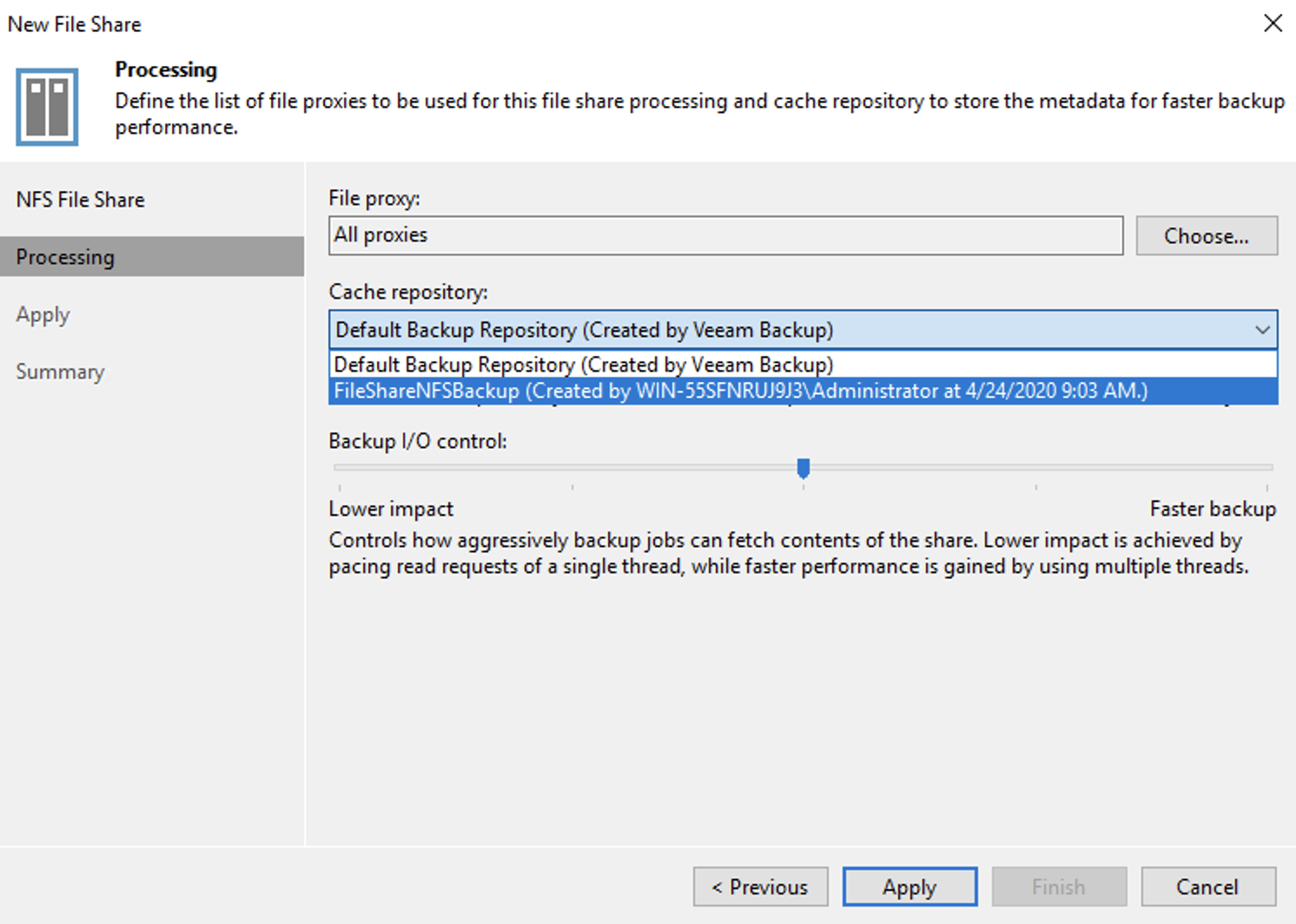
Review the Apply page and click Next. Review the Summary page and click Finish.
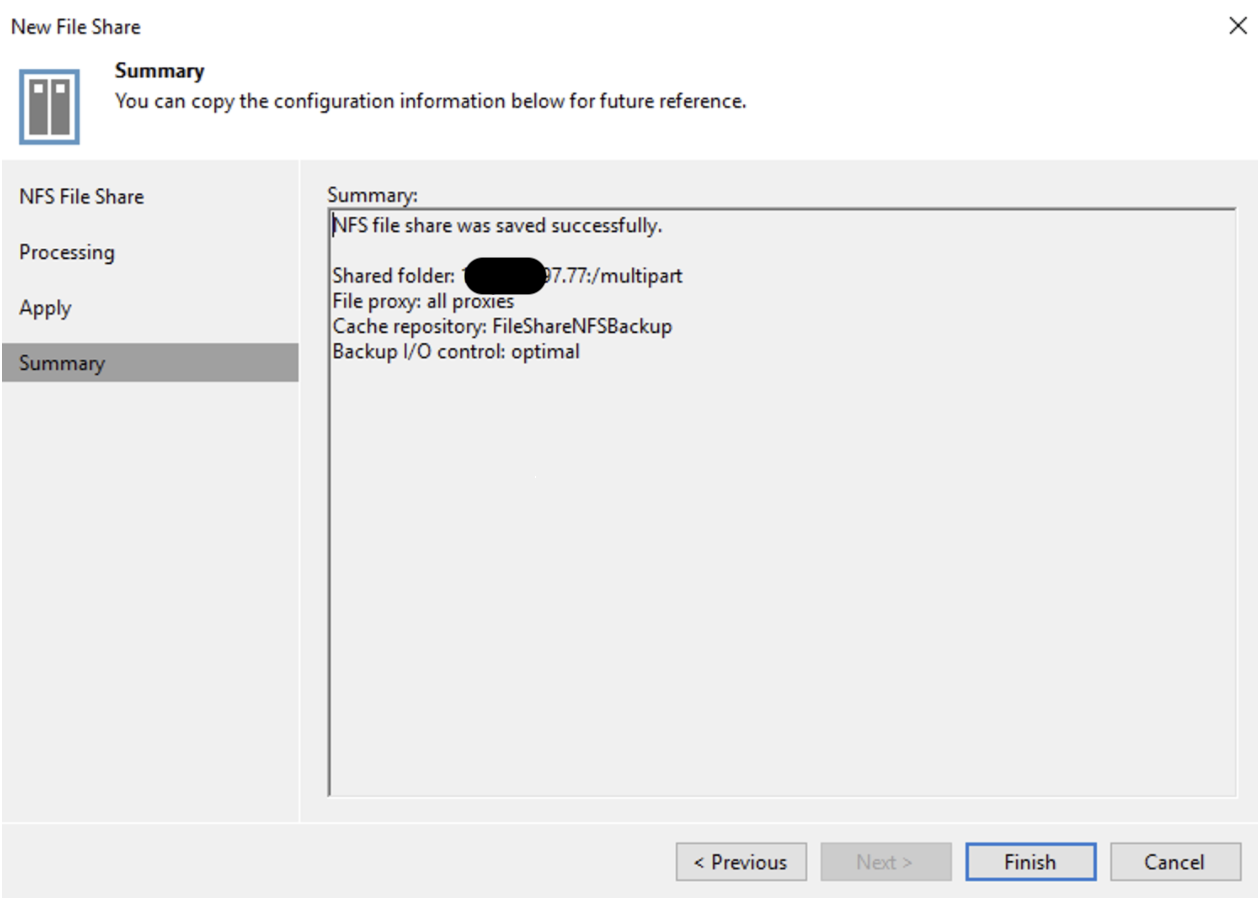
Once the newly added NFS share completes, right-click and highlight Add to backup job from the menu. Click "New Job...".
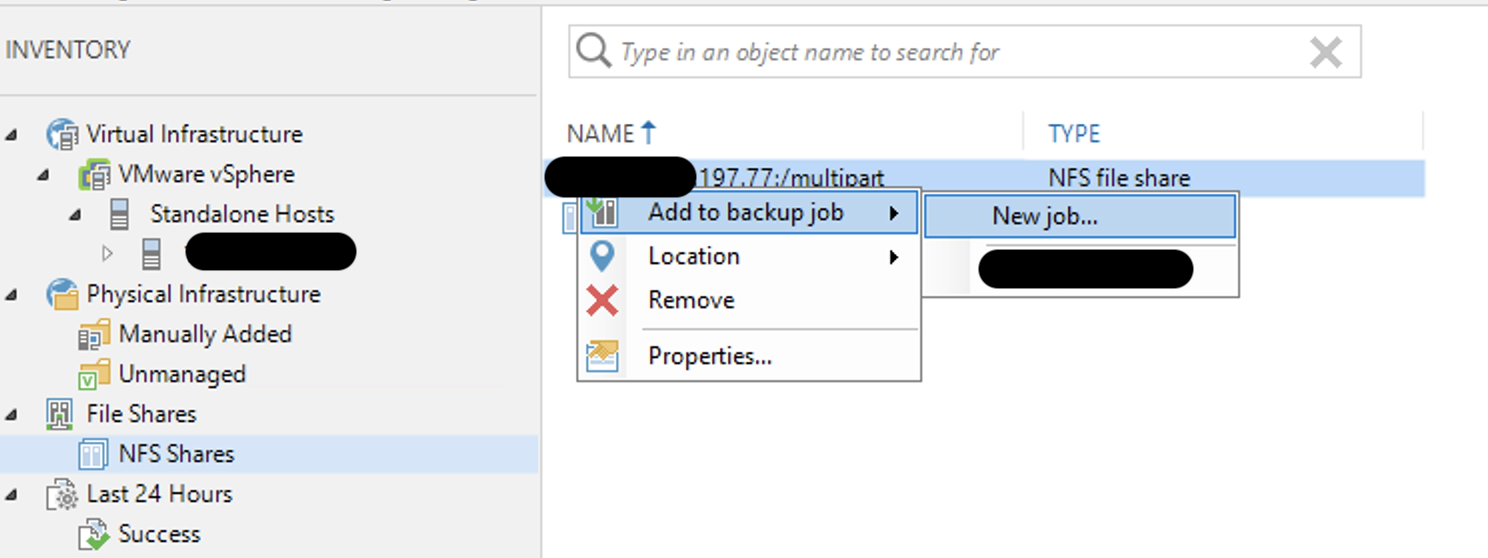
Input a Name and Description. Click Next.
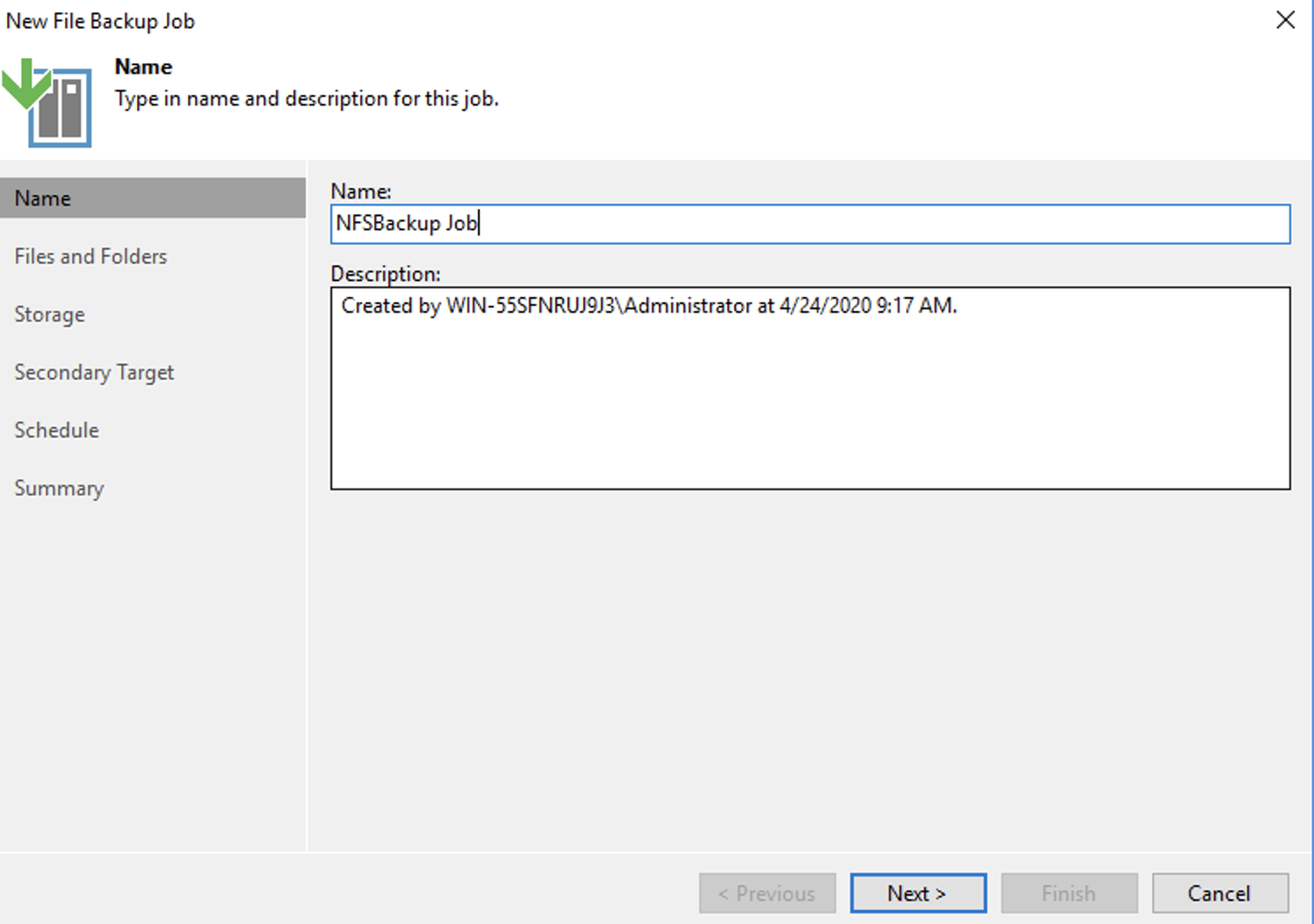
Review the Files and Folders page. Click Next.
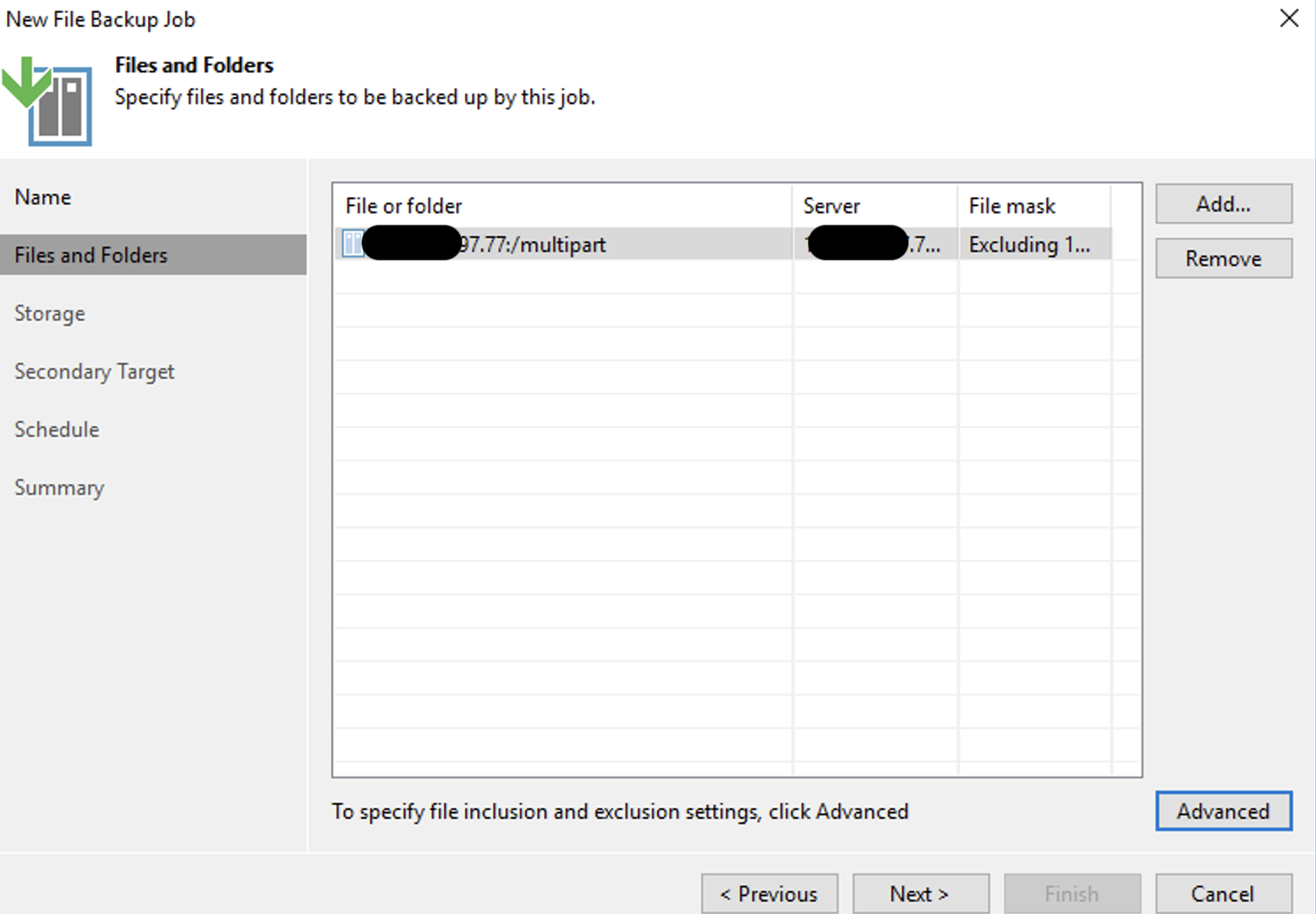
Configure the following information and click Next.
Backup Repository: Choose your local direct-attached repository from the drop-down.
This is not the Scale-out Backup Repository. For information on creating a Backup Repository, follow steps 1-13 in Backup Job in Veeam v10 With Wasabi.
Keep all files versions for the last: Set this value to "1 day".
Keep previous file versions for: Check this box and set the timeframe for your desired retention period.
Archive repository: Click the drop-down and select your Wasabi Cloud Storage backup repository from the list.
For information on adding Wasabi as an Object Storage Repository, follow steps 14-21 in Backup Job in Veeam v10 With Wasabi.
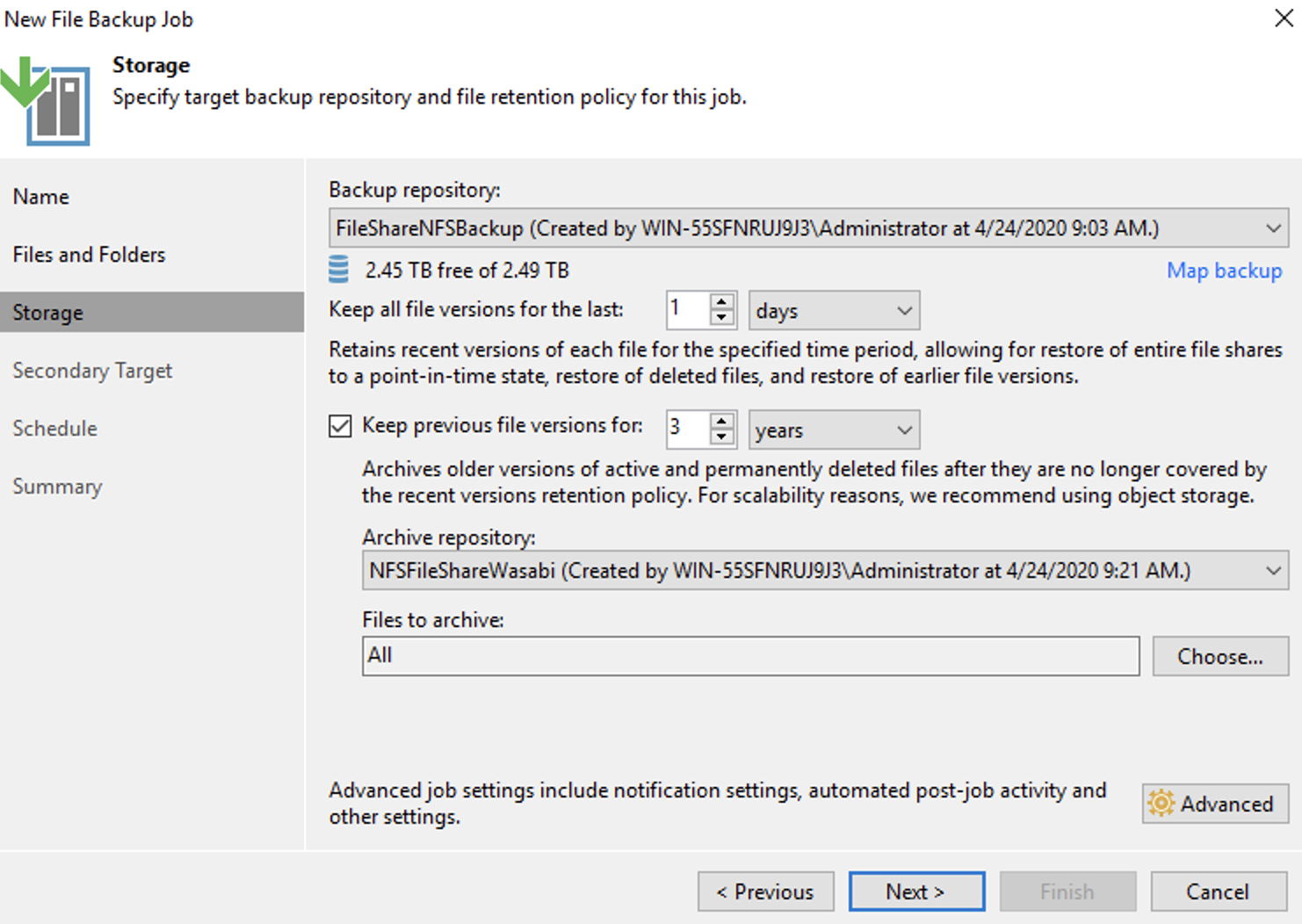
Leave the default settings for the Secondary Target and Schedule pages. Review the Summary page and click Finish.
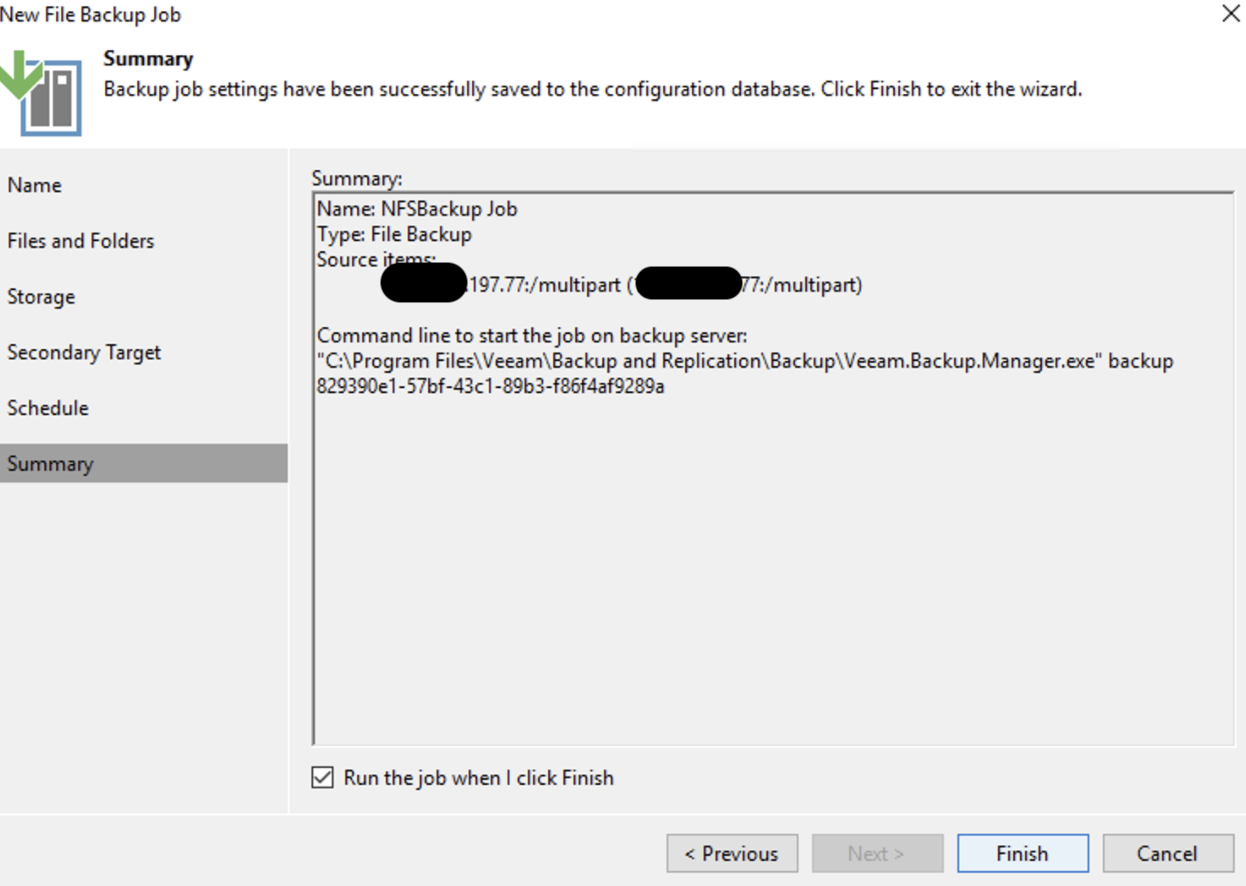
Navigate to the Home tab. Under Last 24 hours, review the job status. Once the job completes, the following output is expected.
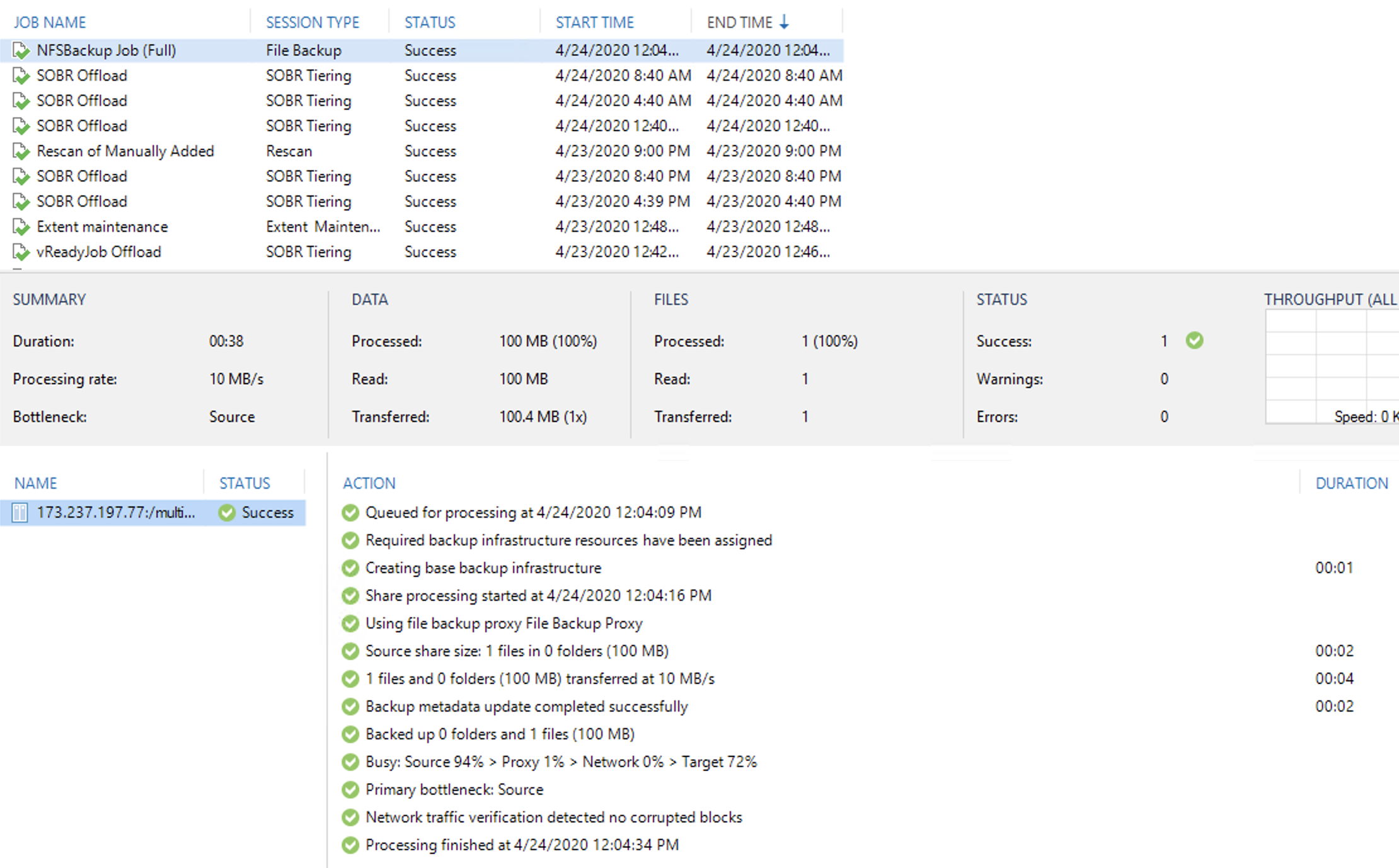
To manually invoke a backup offload, the data on the NAS requires a change. In the example, we copied over an additional 100MB of data. This change will invoke the offload logic within Veeam to begin to offload the first backup.
Once the data change is complete, navigate to Home > Jobs > Backup. Right-click NFSBackup Job. Click Start.

Once the job completes, a restore point is archived to the Capacity tier.
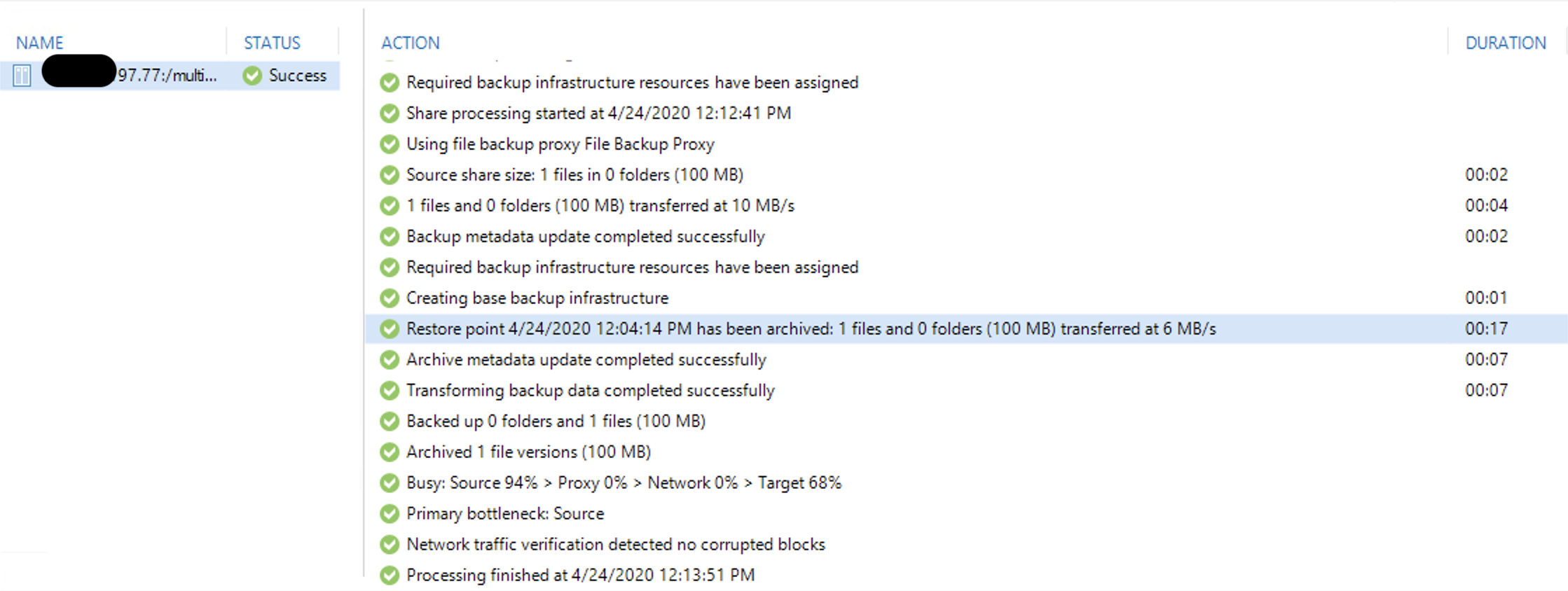
Confirm the backup on your Wasabi account.
